More cellular automaton mazes
The last two days we have become familiar with some of the CA maze-generating rules: “Maze” (B3/S12345), “Mazectric” (B3/S1234) and the B2(7)(8)/S(0)123(5)(6)(7)(8) family of very nice mazes. As noted, however, there are many more maze-generating rules, producing mazes with a number of different qualities. Today we will show a few more examples.
Some mazes are composed mainly (or even exclusively) of horizontal and vertical walls without corners, often found clustered together. For example, this is B2/S124, which consists of a single connected component:
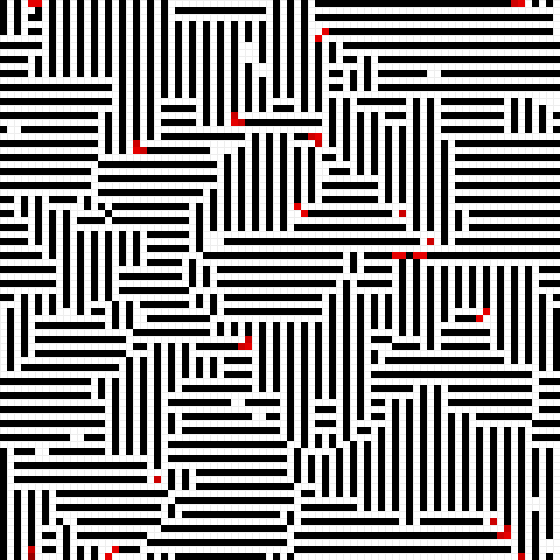
The following maze (B3/S012358) is almost as simple, but also contains a few corners. As the reader can check for herself (e.g., using Win+R, pbrush, Enter), this one consists of one huge connected component and a few smaller components:
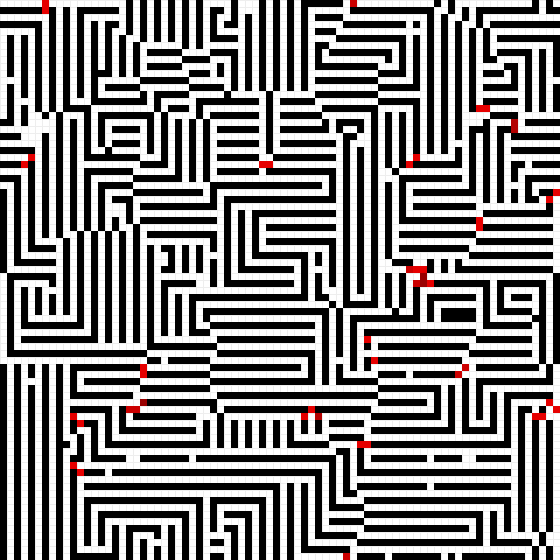
At the other extreme, this maze (B25/S23457) consists of a large number of (mostly either horizontal or vertical) small corridors not connected to each other:
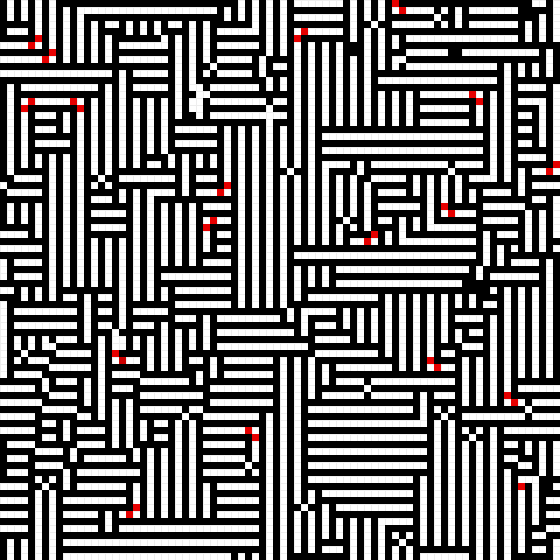
Occasionally, you find a rule that forms voids (white-coloured areas) or rocks (black-coloured areas) in a maze (B278/S0124567):
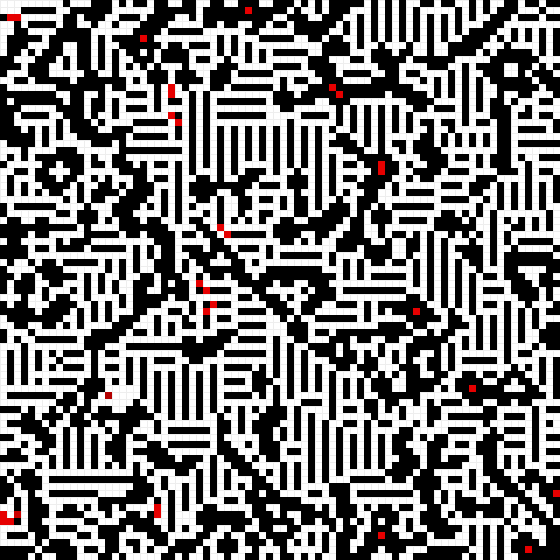
There are also rules that produce mazes with very short walls, like B26/S012357:
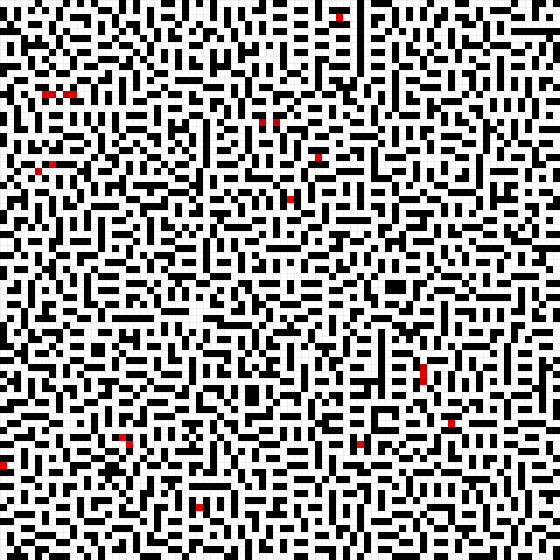
Some mazes have additional features, like “force fields” (B23/S234):
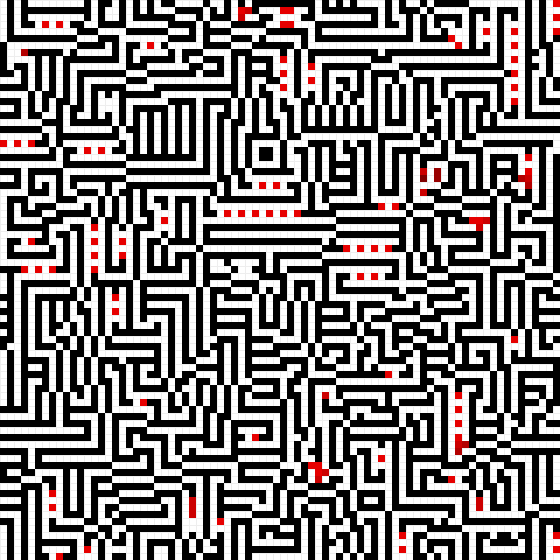
A well-known example is “Maze with Mice” (B37/S12345):
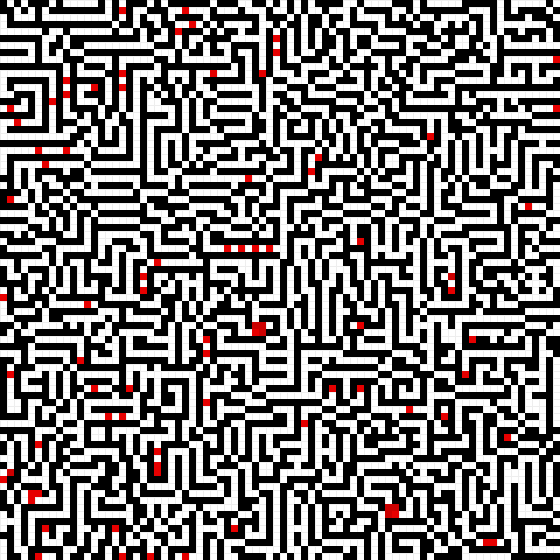
Try also B2378/S1234.
All mazes we have considered thus far have been almost stationary patterns (with the occasional oscillating corner, “force field”, or “mouse”), but there are also rules that form mazes that alternate between generations. Typically, a maze is replaced by its inverse in the next generation. I use the term “red mazes” to denote these, since they are shown in red in my software (because the walls consist of newly born cells in each generation). Below is B24567/S, one of these “red maze” rules:
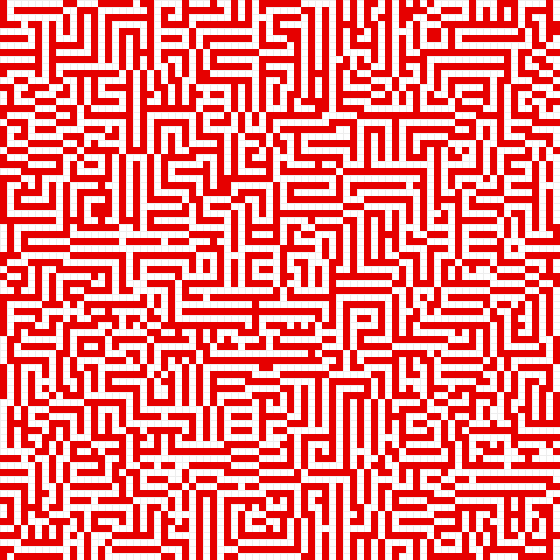
In this article and the previous ones, we have only seen a small number of the many maze-forming rules. However, most of the remaining rules are close variants of the ones we have seen.
